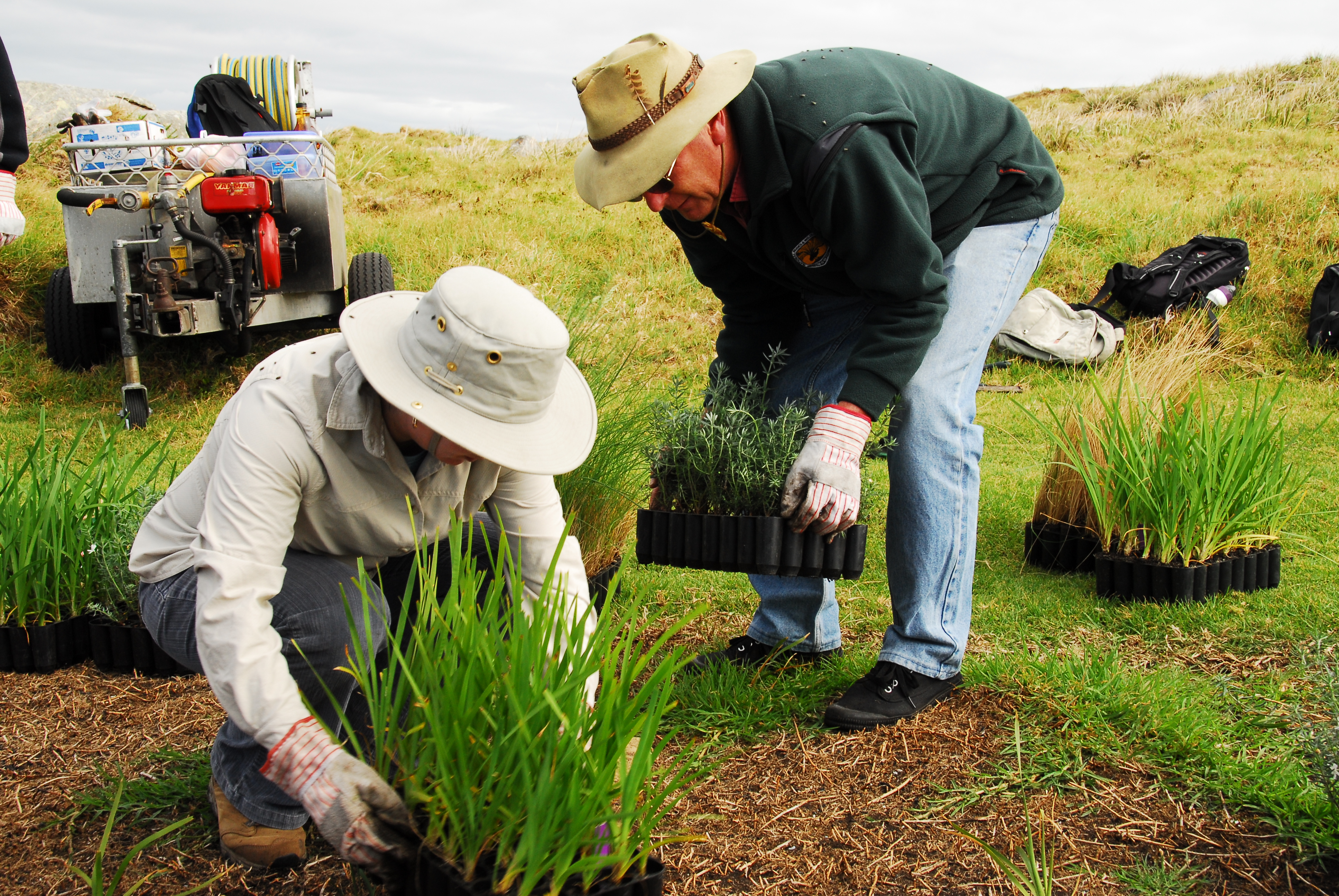

Community support and involvement in the project was critically important to its success. The restoration project was a key feature of the draft Plan of Management and received strong positive support during community consultation. During the development of the project, managers consulted with local organisations including Aboriginal Elders and communities, the Royal Society for Prevention of Cruelty to Animals and seabird scientists.
Volunteers and the community were instrumental in helping overcome logistical challenges such as replanting thousands of native seedlings. Diverse organisations offered to help including local community members, local school students, Charles Sturt University undergraduate students and ecotour participants.
Interest in the island has expanded and the island is now an iconic tourist destination. Visitors join a NPWS ranger or trained volunteer on an education tour to learn about the island, its wildlife and history. In addition to supporting a thriving tour boat industry, educational tourism creates a greater awareness of the conservation value of the island, its unique wildlife and its value to the local community.
Community participation was built in at the planning phase so volunteers were fully supported and supervised. Volunteers worked on suitable activities such as planting seedlings, weeding, making nest boxes and marking Little Penguin burrows. Volunteers were able to stay overnight in restored cottages. The conservation volunteer program was a partnership between NPWS and Conservation Volunteers Australia. The program offered fully escorted day and overnight tours of the island with visitors required to work each day.
A volunteer program requires a sustained commitment from both the volunteers and management to ensure that volunteers are able to undertake meaningful work safely. In an island with sensitive conservation and cultural values it was important to balance the number of volunteers and the type of activities they could undertake. For example, volunteer involvement in the seabird research program was limited to only one volunteer at a time due to stress on chicks caused by ‘crowding’ of multiple people around burrows.
We observed that by valuing our volunteers, the benefits of the program were multiplied. Volunteers became advocates for the program in the community and stayed on as volunteer tour guides on the island after the rehabilitation program was completed.